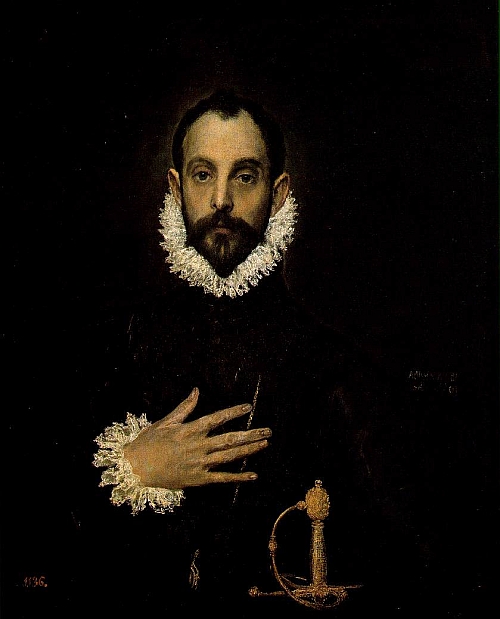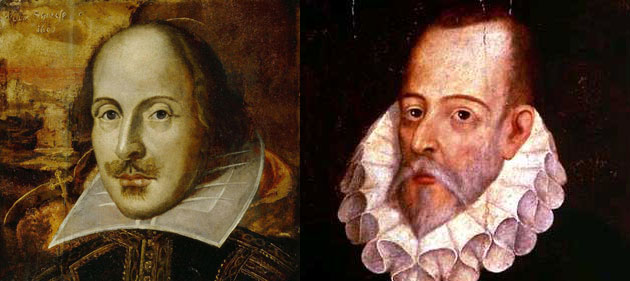I
have finished Part I of Don Quixote, so I thought it would be a good idea to
stop and take stock. You’ve no doubt noticed that the book has already spawned
quite a few posts, but I haven’t actually sat down to process what I think of
it.
 Before picking up the book, my closest encounter with "the Knight of the Sorrowful Face" was a lanky Lladro statuette that graced my family's living room, and whose fragile porcelain sword probably earned me a spanking when it broke in some forgotten, childhood, rough-housing. Funny that almost 400 years after he made his mark on the world, Quixote is still suffering all kinds of injustices and humiliations.
Before picking up the book, my closest encounter with "the Knight of the Sorrowful Face" was a lanky Lladro statuette that graced my family's living room, and whose fragile porcelain sword probably earned me a spanking when it broke in some forgotten, childhood, rough-housing. Funny that almost 400 years after he made his mark on the world, Quixote is still suffering all kinds of injustices and humiliations.
Anyway, here are some meandering reactions:
What’s
all this garbage about windmills? Seriously, blink and you’ll miss them. My
guess is that the windmill episode has settled so prominently into our
consciousness, not because it was such a profound moment in the story, but
because most readers give up on the book in the first one-hundred
pages, and the windmills just happen to be one of the early vignettes that
everybody reads before giving up. If you wanted an iconic image that recurs
time and time again, and has an impact on the psyche of the characters, you’d
probably be better off choosing the image of Sancho Panza being tossed
repeatedly in a blanket to his great shame at the Inn. The Knight and his squire suffer more mishaps and indignities than Ben Stiller in a 'Meet the Parents' movie, but none of the physical
punishment they suffer has quite the effect as that simple
humiliation.
For better or for worse, Part
I is a storyteller’s orgy. For long periods, we leave Don Quixote and Sancho
for the unrelated tales of Gristostomo and Marcela, Cardenio and Dorotea, Don Fernando and Luscinda, Anselmo and Lothario, the captive and Zoraida,
Don Luis and Clara and her father the Judge and on and on and on. Sometimes it’s
a side character’s backstory, other times the travelers simply sit down and
read an entire novella with eachother, while Don Quixote sleeps. Towards the
end of Part I, when each new arrival at the Inn introduces its own 50 page tangent,
it starts to get a little tiresome. If I had gone into the book expecting a Canterbury Tales Smorgasbord of travellers’ yarns, it might not
have bothered me. But since I was expecting to cover lots of fresh ground with
Quixote and Panza and windmills… yeah, I lost a little steam at the end there.
I was pleased to see Part II, which was published 10 years after Part I, open up
with an acknowledgement of his out-of-control tangents. Apparently his
countryman had the same reaction as I did.
Having
said all of that, it’s a brilliant satire. It must have been to Cervantes’s
contemporaries, what a hilarious spoof of Fabio-covered romances would be in
our day. But Cervantes raises some important questions about what art is
exactly—what the masses want out of it, and what the duties of the author are.
I was also amazed at what a profoundly modern feel it has, what with Cervantes
referring to himself and his rivals, to contemporary works and pop culture
references that must have felt very edgy and relevant when it was first
published. By the time Part II kicks off, he’s already weaving then-current reader
reactions into the story itself.
You’re also never quite sure where the
narrator stands. Sometimes he complains that the fictional Moorish source
documents are probably filled with lies to lessen the stature of Quixote, at
other times he openly refers to Quixote as a lunatic.
For
all its faults, Don Quixote must have been a groundbreaking work for its time.
And there’s good reason why writers and readers still read it and emulate it today.
On to Part II…









.jpg)
.jpg)


